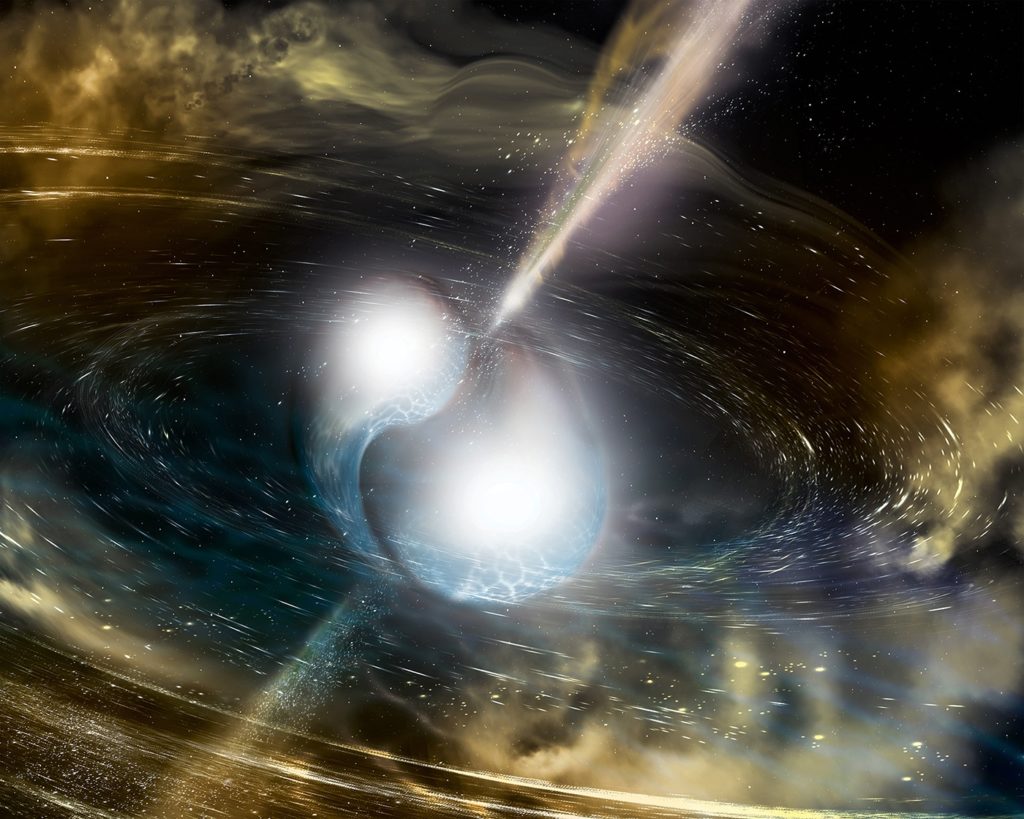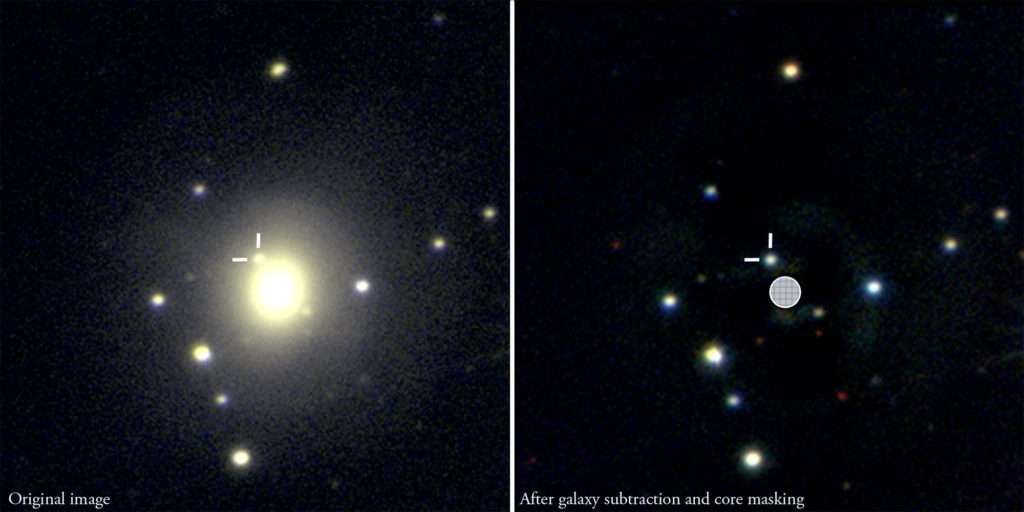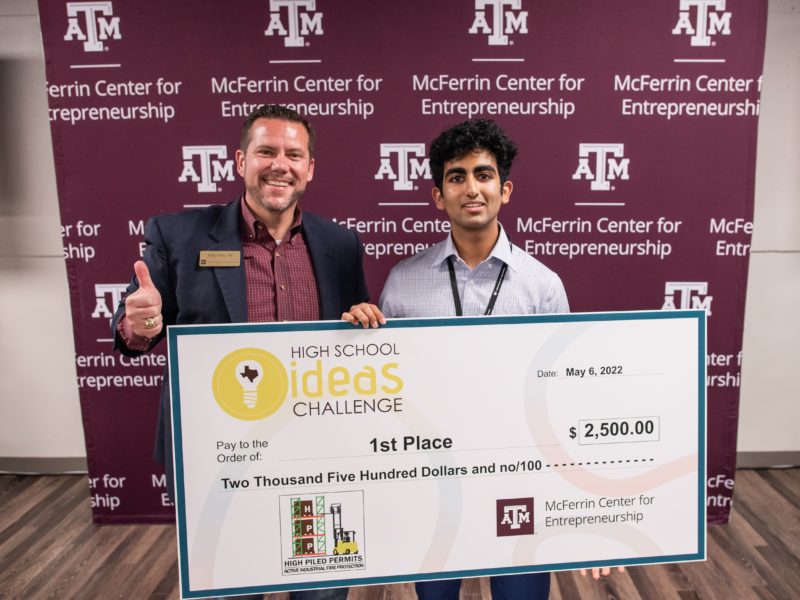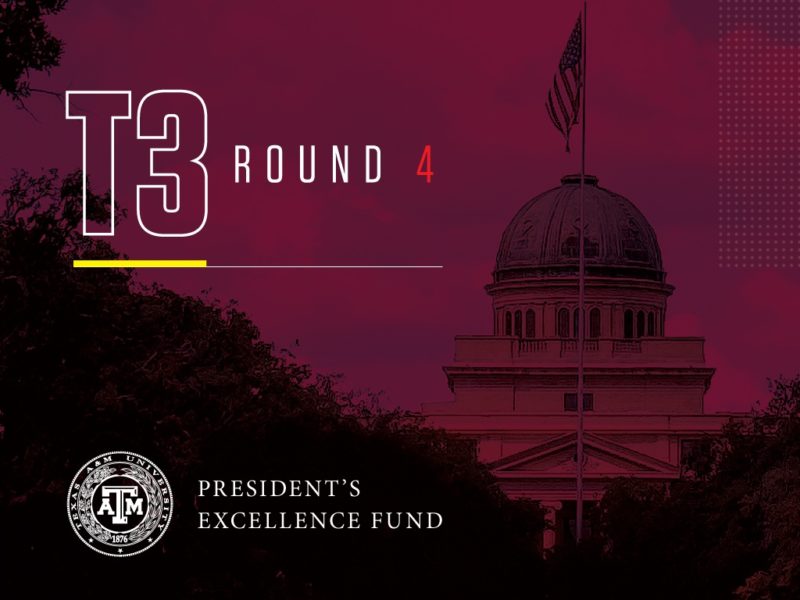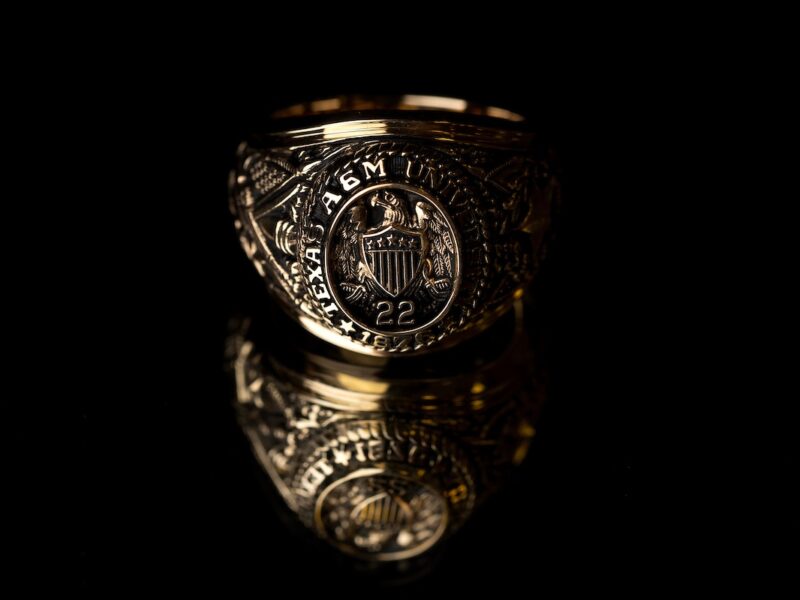About 130 million years ago in the galaxy NGC 4993, a pair of neutron stars collided as a result of the slow but inexorable decay of their orbits, as predicted by Albert Einstein’s general theory of relativity. The cosmic collision of these objects, similar to the Sun in mass but with densities of a billion tons per teaspoon, set up ripples in spacetime that raced outward at the speed of light. The glowing aftermath of the event, rich in heavy radioactive elements, is similar to a supernova but on a smaller scale and is called a kilonova.
Today’s mirror effect in international media circles and scientific journals across the world is reflective of that energy — an excitement and enthusiasm that reverberates throughout the Texas A&M University Astronomy Group and many astronomers involved in the subsequent imaging and analyses.
The ripples in space-time generated by this event passed through Earth about 7:41 a.m. CDT on August 17, 2017, and were detected by a network of three gravitational-wave observatories: two belonging to the U.S.-based Laser Interferometer Gravitational-Wave Observatory (LIGO) and the European Virgo. Given the date of the event, it was named GW170817. The LIGO detectors, which have been operational for about two years, already had sensed similar waves emanating from four mergers of black holes — the first of which in 2015 led to the 2017 Nobel Prize in Physics.
“The Virgo detector only started operating this summer in time to participate in the detection of the most recent black hole merger prior to this historic first detection of the merger of two neutron stars,” said Texas A&M astronomer Lucas Macri. “Having three detectors widely spaced around the Earth is critical to pinpoint the location of these events and enable further studies with conventional telescopes.”
Although this is the fifth source of gravitational waves to be detected, it is historical because it is the first one with a counterpart visible by traditional telescopes — the glowing aftermath of the collision of two neutron stars — as opposed to binary black holes, which are not expected to produce a detectable remnant.
Macri is one of several Texas A&M astronomers who had been anticipating and preparing for this day for many years. He and his colleagues within the George P. and Cynthia Woods Mitchell Institute for Fundamental Physics and Astronomy observed and analyzed this historic event using a variety of telescopes around the world. In addition to Macri, that list includes Darren DePoy, Jennifer Marshall, Nicholas Suntzeff and Lifan Wang.
The LIGO-Virgo results are published today in the journal Physical Review Letters, while many additional papers from LIGO-Virgo and the astronomical community either have been accepted for publication or are being published today in various journals. Several papers involving the aforementioned Texas A&M astronomers appear today in Science and The Astrophysical Journal Letters.
TOROS Collaboration
Since 2012, Lucas Macri, University of Texas Rio Grande Valley astronomer Mario Díaz and Universidad Nacional de Córdoba astronomer Diego Garcia Lambas have been working to establish a robotic telescope in the Argentine Andes to follow up kilonova explosions. Their collaboration, called the Transient Optical Robotic Observatory of the South (TOROS), involves about 50 astronomers from all over the world. The TOROS telescope and its dome currently are on their way to Argentina and should be operational at some point during 2018. The collaboration plans to upgrade the camera for this telescope during the next few years with a state-of-the-art 100-megapixel device and corrector lenses that will be designed, tested and built by Darren DePoy, Jennifer Marshall and their team within Texas A&M’s Charles R. ’62 and Judith G. Munnerlyn Astronomical Instrumentation Laboratory.
Using the T80-South telescope located at the Cerro Tololo Inter-American Observatory (CTIO) in Chile and the Bosque Alegre telescope located in Argentina, Macri and collaborators studied the fast-fading kilonova at various wavelengths, which is useful to rule out various models for the explosion.
“Contrary to expectations, this kilonova was quite bluish during the first couple of days,” Macri said. “This may mean that not as much radioactive material was produced, or we were looking at the event from above the plane in which the two neutron stars orbited each other.”
Dark Energy Survey
During the course of seven days in Chile, Jennifer Marshall watched the extraordinary event play out in real time through two telescopes — the 4-meter Victor M. Blanco Telescope at CTIO and the 6.5-meter Magellan Telescope at nearby Las Campanas Observatory. She was the only astronomer present and observing on behalf of the U.S. Department of Energy-funded Dark Energy Survey (DES) at Blanco during the unprecedented occurrence.
While in Chile, Marshall got to witness firsthand the fiery aftermath of the explosion while personally recording some of the initial images using the 570-megapixel Dark Energy Camera (DECam), for which Darren DePoy served as the project scientist.
Texas A&M Astronomer Jennifer Marshall Witnesses Cosmic History In Chile
Down at Dome A
Due to relative position of the Sun, Earth and NGC 4993, the kilonova could only be observed for only about 90 minutes after sunset from CTIO and other observatories located at mid-latitudes in the Southern hemisphere. This limitation was not an issue for the team that included Texas A&M astronomers Lifan Wang and Nicholas Suntzeff, who are part of a collaboration with Australian astronomers that conducted immediate follow-up on GW170817 all the way from Dome A in Antarctica, using a fully-robotic telescope called AST3 that is part of the at PLATeau Observatory (PLATO-A) established in 2008.
The uninterrupted polar night enabled Wang and Suntzeff’s team to obtain near-continuous observations of the kilonova, filling in critical gaps at points when no other observatories could image the source.
“I think it’s pretty cool that we can tell a telescope at the coldest place on Earth to look at something of this magnitude,” Suntzeff said.
Publications
Darren DePoy, Lucas Macri, Jennifer Marshall, Nicholas Suntzeff and Lifan Wang are co-authors in a mega-paper that summarizes all the worldwide, space-based observations made during that history-making week in August.
Lucas Macri is the corresponding author in a publication that appears today in The Astrophysical Journal Letters detailing the results of the TOROS observations. He also is presenting those results today in Baton Rouge as part of a Gravitational Wave Astrophysics Conference sponsored by the International Astronomical Union and hosted by Louisiana State University. In addition, Macri is featured in several newspapers in his native Argentina, where he participated in an embargoed press conference last week.
Jennifer Marshall is a co-author in nine publications making their debut today. In addition to the two papers mentioned above, her observations appear in two DES-related papers in The Astrophysical Journal Letters as well as two papers in the journal Science featuring the Las Campanas spectra and images. Beyond those, she is an author on three additional DES papers, including one that uses the binary neutron star merger event to estimate the value of the Hubble constant. Darren DePoy is a co-author in four of the DES papers as a DES Builder along with Marshall, who also is a member of the survey’s management and science committees.
Lifan Wang is the corresponding author of a paper published today in Science Bulletin on AST3 observations of GW 170817. Wang and the AST3 team under his leadership is also a part of the Deep Wide and Fast (DWF) survey collaboration that aims to discover optical counterparts of rapid transients arising from gravitational wave and fast radio burst events. The team has access to a broad range of survey telescopes around the globe, from which they acquired spectroscopy that show a rapidly evolving object, with color turning from blue to red extremely fast. Wang also is on a proposal to use the European Space Observatory’s very large telescope to acquire data of the target in the mid infrared. These data and results are published today in Publications of Australia Society of Astronomy.
Lifan Wang and Nicholas Suntzeff are co-authors in a publication that presents the results of the Antarctic observations, as well as another paper written in collaboration with the Australian OzGrav team.
###
Contact: Shana Hutchins, (979) 862-1237 or shutchins@science.tamu.edu, Dr. Lucas Macri, (979) 845-7362 or lmacri@tamu.edu, Dr. Jennifer Marshall, (979) 862-2782 or marshall@physics.tamu.edu, or Dr. Lifan Wang, (979) 845-4881 or lifan@exchange.tamu.edu
